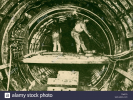Legolash2o
Member
- Joined
- 27 Sep 2018
- Messages
- 671
I've been catching up on the Transpennine thread and there was mention of re-boring tunnels.
My questions are how does it work (boring machine?), how long does it take, how costly is it and why isn't it considered more often for locations such as Standedge, Stalybridge and Scout Tunnels?
I suspect it's too disruptive and significantly increases the cost, which in turn impacts the cost-benefit analysis.
My questions are how does it work (boring machine?), how long does it take, how costly is it and why isn't it considered more often for locations such as Standedge, Stalybridge and Scout Tunnels?
I suspect it's too disruptive and significantly increases the cost, which in turn impacts the cost-benefit analysis.
There a new piece on TP electrification in Railway Gazette, suggesting there is increasing optimism about wiring the full route:
Trans-Pennine electrification hopes rise | Rail Business UK | Railway Gazette International



